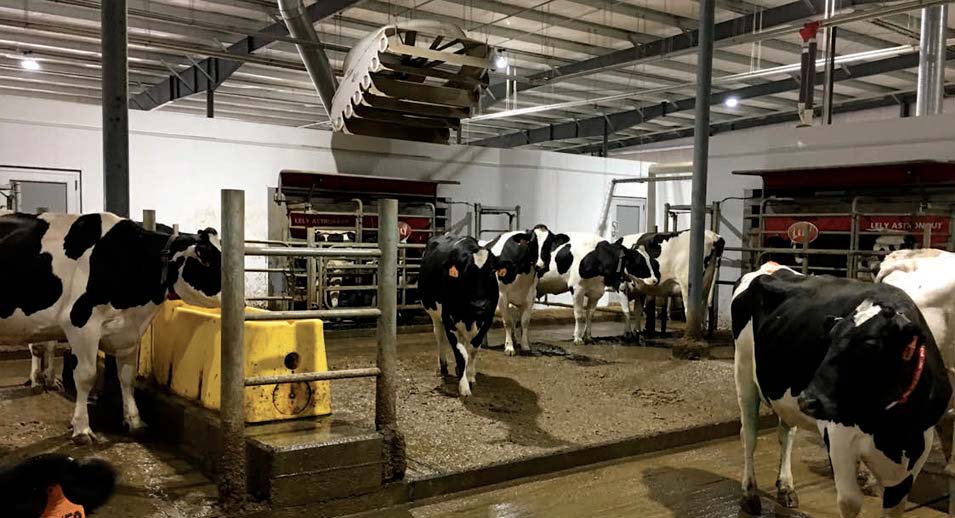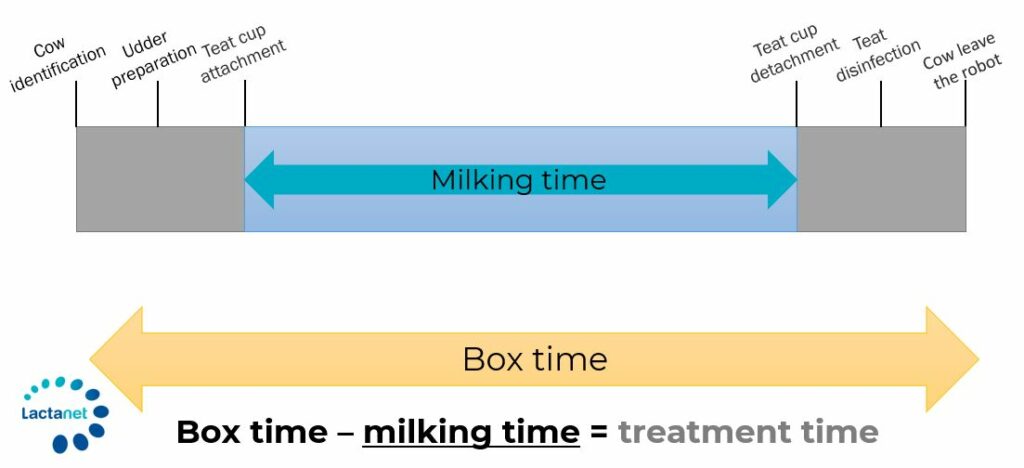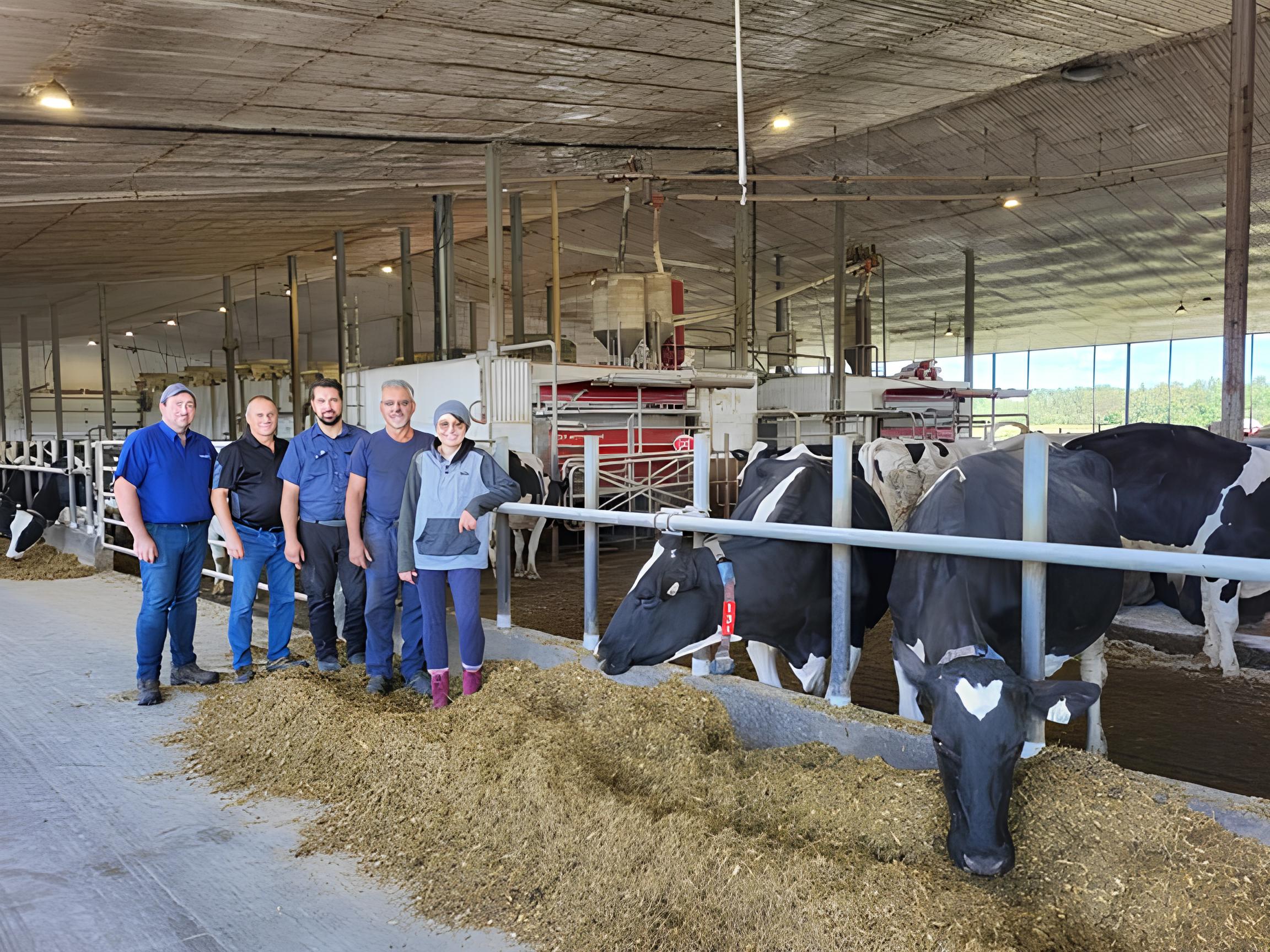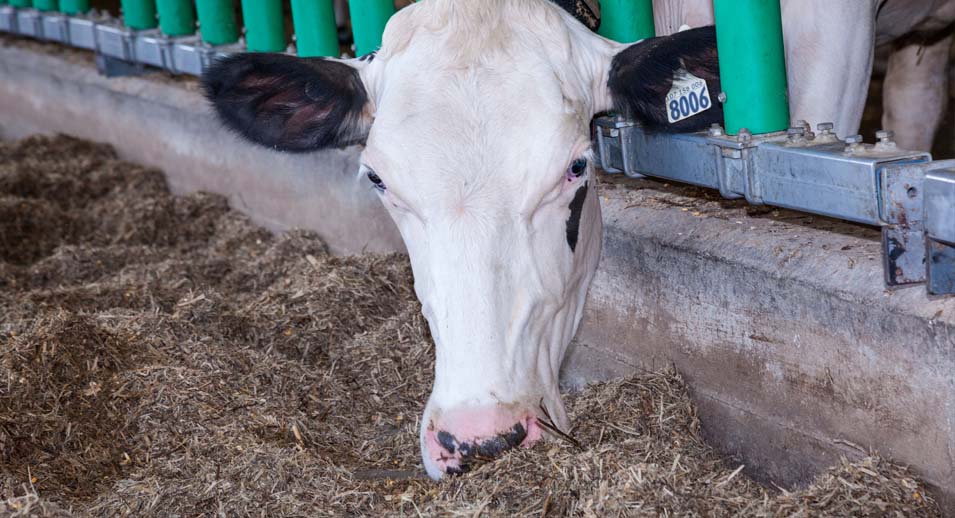A New Tool to Select Your Most Efficient Cows For the Robot
- May 18, 2022
- Le Producteur de Lait Québécois Magazine

Does the Ideal Cow for Robotic Milking Exist?
First, let’s go back to the definition of efficiency in robotic milking: It is the number of kilograms of milk collected for the total time the cow is in the robot. Figure 1 shows us the segmentation of the time a cow uses in the robot at each milking.

The time a cow spends using the robot can be separated into two parts: milking time and preparation time. The efficiency of the milking time can be further characterized by the milking speed. By measuring the kilograms of milk produced per minute in the robot, we can identify cows that are ideal for robotic milking. These are cows that have a higher-than-average milking speed and have a good temperament and udder conformation. These last two elements make the preparation time faster than average.
Adjusted Milk Value
Milk components + component price + Amount of milk produced/minutes at the robot = Value of milk/minute at the robot
| Lactation number | Days in milk | Value of milk/minute in the robot | Adjusted (Standard)Milk value/minute in the robot | |
| Cow A | 1 | 62 | $ 1,01 | $ 1,32 |
| Cow B | 1 | 264 | $ 1,25 | $ 1,37 |
| Cow C | 5 | 41 | $ 1,27 | $ 1,35 |
What Influences the Value of Standard Milk per Minute in the Robot?
Milking speed and preparation time are the two main factors that influence the Standard Milk value per minute in the robot. If a cow is not efficient, it is because her preparation time is too long, or the milking speed is slow. Often, both factors are involved.
The kilograms of milk per minute in the robot also have a genetic component. A Norwegian team has established its heritability at 0.29 (B. Heringstad, August 20141). In other words, this means that the kilograms of milk produced per minute by the daughters in the robot is 29% influenced by the genetics of the parents, and that environmental factors will have a 71% impact on this performance.
If you want to improve the efficiency of robotic milking, you should choose the most efficient cows as mothers of future breeding heifers. This means that if you want to increase your kilograms of fat production per robot in the next few years, it will be easier to do so with cows that are more efficient. The total milking time available per robot is about 1180 minutes per day. If the average herd efficiency goes from 1.80 kg to 2.0 kg of milk per minute in the robot over the next few years, you will be able to produce 236 kg more milk per robot, and 9.7 kg more fat per robot with an average fat test of 4.1%. That’s an increase in income with the same assets.
When and How to Access the Report?
This new tool will be available in the next few months in the reports section of MySite for producers using robotic milking under milk recording. A help menu will be provided with the report to give you a hand in interpreting the results. Lactanet’s robot advisors can also guide you in making the most of this tool.
Be sure to check our website, social networks, and Dairy Knowledge for more information.
1 B. Heringstad and H. K. Bugten, 2014, Genetic Evaluations of Milkability in Norwegian Red Based on Data from Automatic Milking Systems











